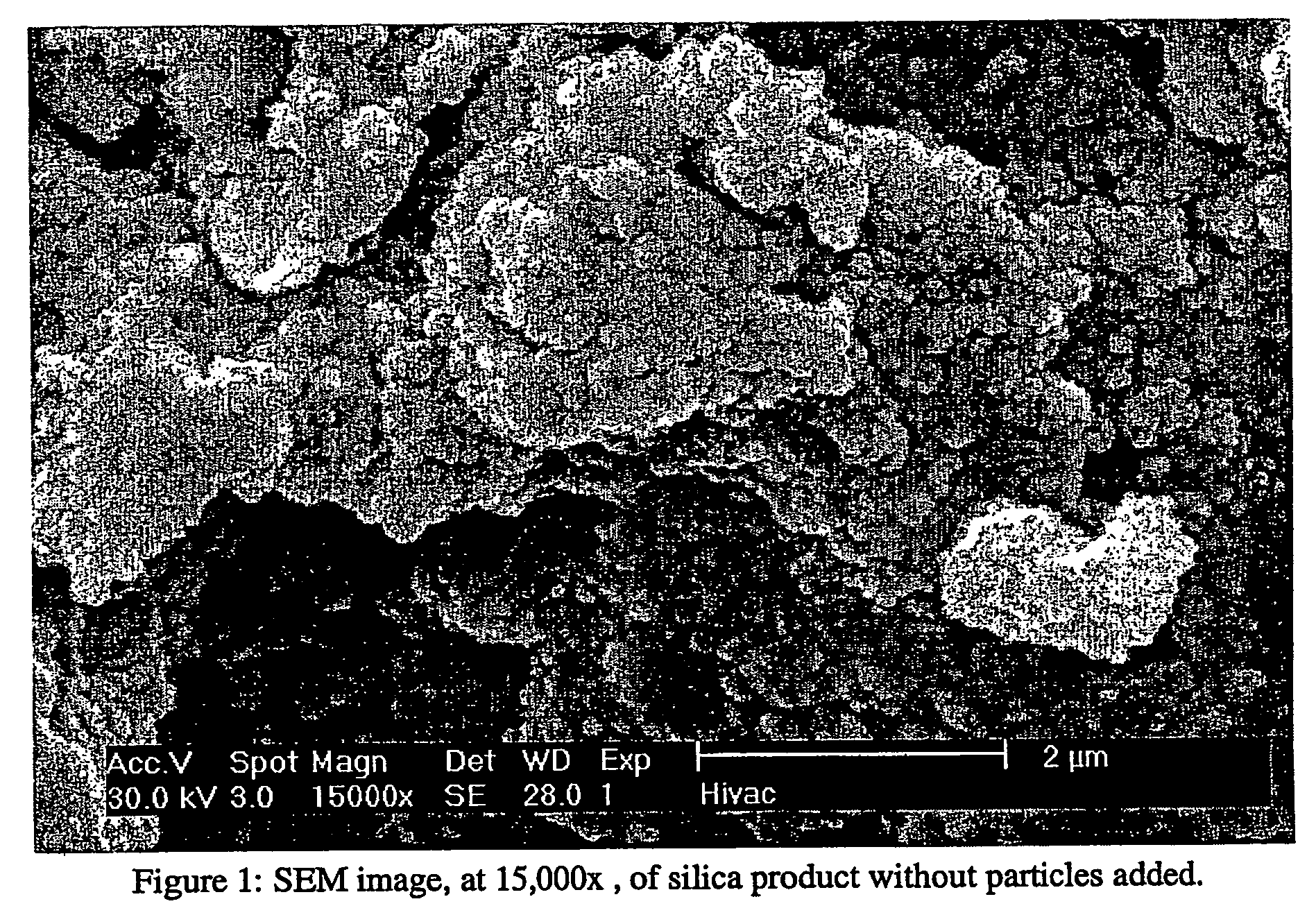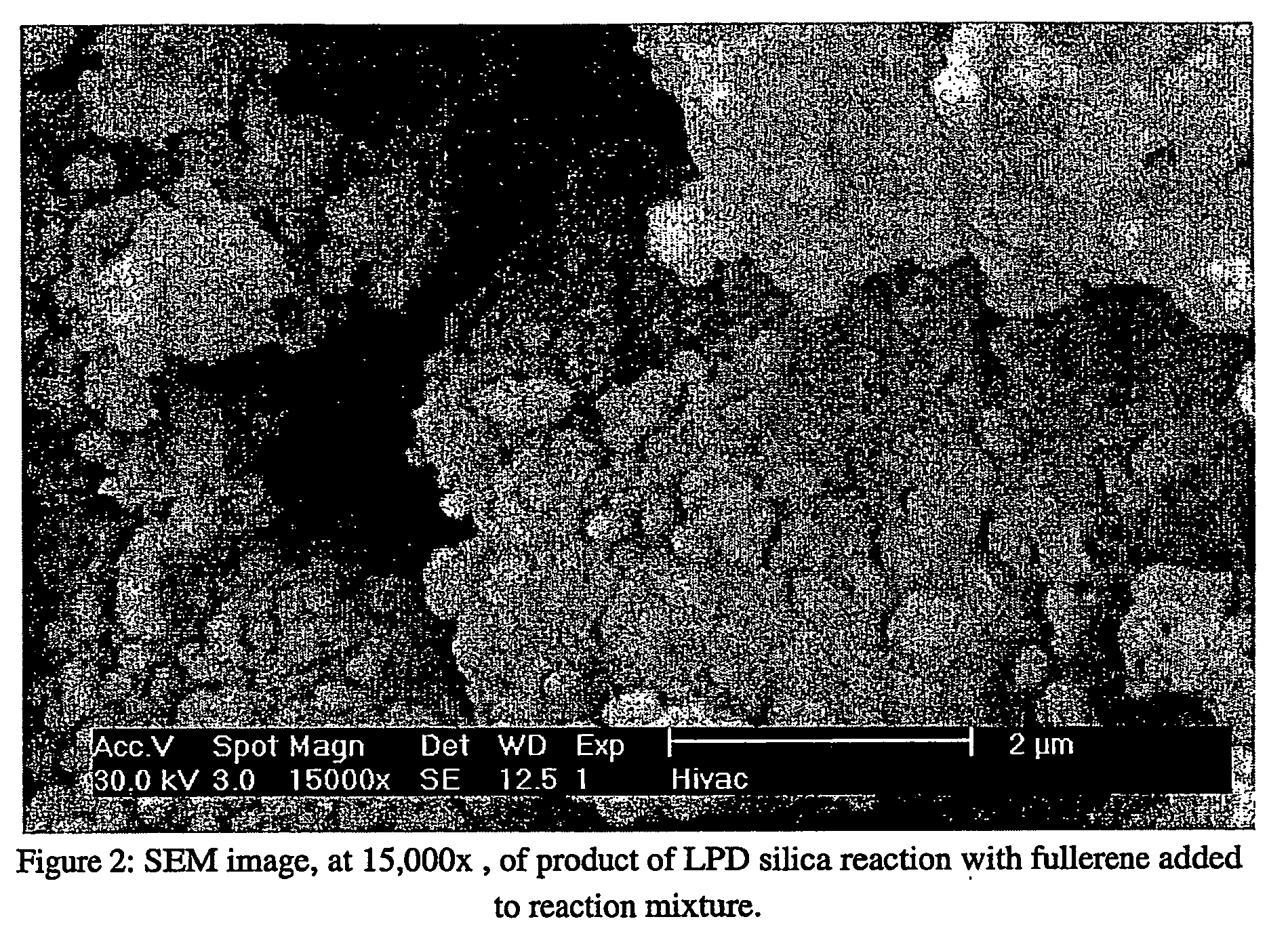Coated fullerenes, composites and dielectrics made therefrom
a fullerene and dielectric technology, applied in the field of coating fullerenes, can solve the problems of uneconomic loading, aggregation of swnts into ropes and bundles, and chiral angles, and achieve the effect of significantly faster formation rate of deposition
- Summary
- Abstract
- Description
- Claims
- Application Information
AI Technical Summary
Benefits of technology
Problems solved by technology
Method used
Image
Examples
example 1
[0090] Fumed silica (3.0 g) was added to 50 mL of 3.20 M fluorosilicic acid solution (H2SiF6: Riedel de Haen, 34% pure) and allowed to stir overnight. This solution was then filtered, by vacuum, through a 0.22 micron Millipore filter. The solution was then diluted to 1.0 M with Millipore (UP) water. A sample of this solution (10 mL) was allowed to react in a plastic centrifuge tube. This mixture was stirred, at 30° C., for 3 hours. The product was then filtered, washed with UP water, dried and analyzed as a powder. The product was imaged with a scanning electron microscope (SEM); the resulting micrograph is shown in FIG. 1.
example 2
[0091] Fumed silica (3.0 g) was added to 50 mL of 3.20 M fluorosilicic acid solution (H2SiF6: Riedel de Haen, 34% pure) and allowed to stir overnight. This solution was then filtered, by vacuum, through a 0.22 micron Millipore filter. The solution was then diluted to 1.0 M with UP water. A sample of this solution (10 mL) was allowed to react with fullerene (10 mg) in a plastic centrifuge tube. This mixture was stirred, at 30° C., for 3 hours. The product was then filtered, washed with UP water, dried and analyzed as a powder. The liquid phase deposition (LPD) product was imaged with a scanning electron microscope (SEM); the resulting micrograph is shown in FIG. 2.
example 3
[0092] Fumed silica (3.0 g) was added to 50 mL of 3.20 M fluorosilicic acid solution (H2SiF6: Riedel de Haen, 34% pure) and allowed to stir overnight. This solution was then filtered, by vacuum, through a 0.22 micron Millipore filter. The solution was then diluted to 1.0 M with UP water. A sample of this solution (10 mL) was allowed to react with fullerenol (10 mg) in a plastic centrifuge tube. This mixture was stirred, at 30° C., for 12 hours. The product was then filtered, washed with UP water, dried and analyzed as a powder. The product was imaged with a scanning electron microscope (SEM); the resulting micrographs are shown in FIGS. 3 and 4.
PUM
| Property | Measurement | Unit |
|---|---|---|
| Temperature | aaaaa | aaaaa |
| Speed | aaaaa | aaaaa |
| Thickness | aaaaa | aaaaa |
Abstract
Description
Claims
Application Information
 Login to View More
Login to View More - R&D
- Intellectual Property
- Life Sciences
- Materials
- Tech Scout
- Unparalleled Data Quality
- Higher Quality Content
- 60% Fewer Hallucinations
Browse by: Latest US Patents, China's latest patents, Technical Efficacy Thesaurus, Application Domain, Technology Topic, Popular Technical Reports.
© 2025 PatSnap. All rights reserved.Legal|Privacy policy|Modern Slavery Act Transparency Statement|Sitemap|About US| Contact US: help@patsnap.com



